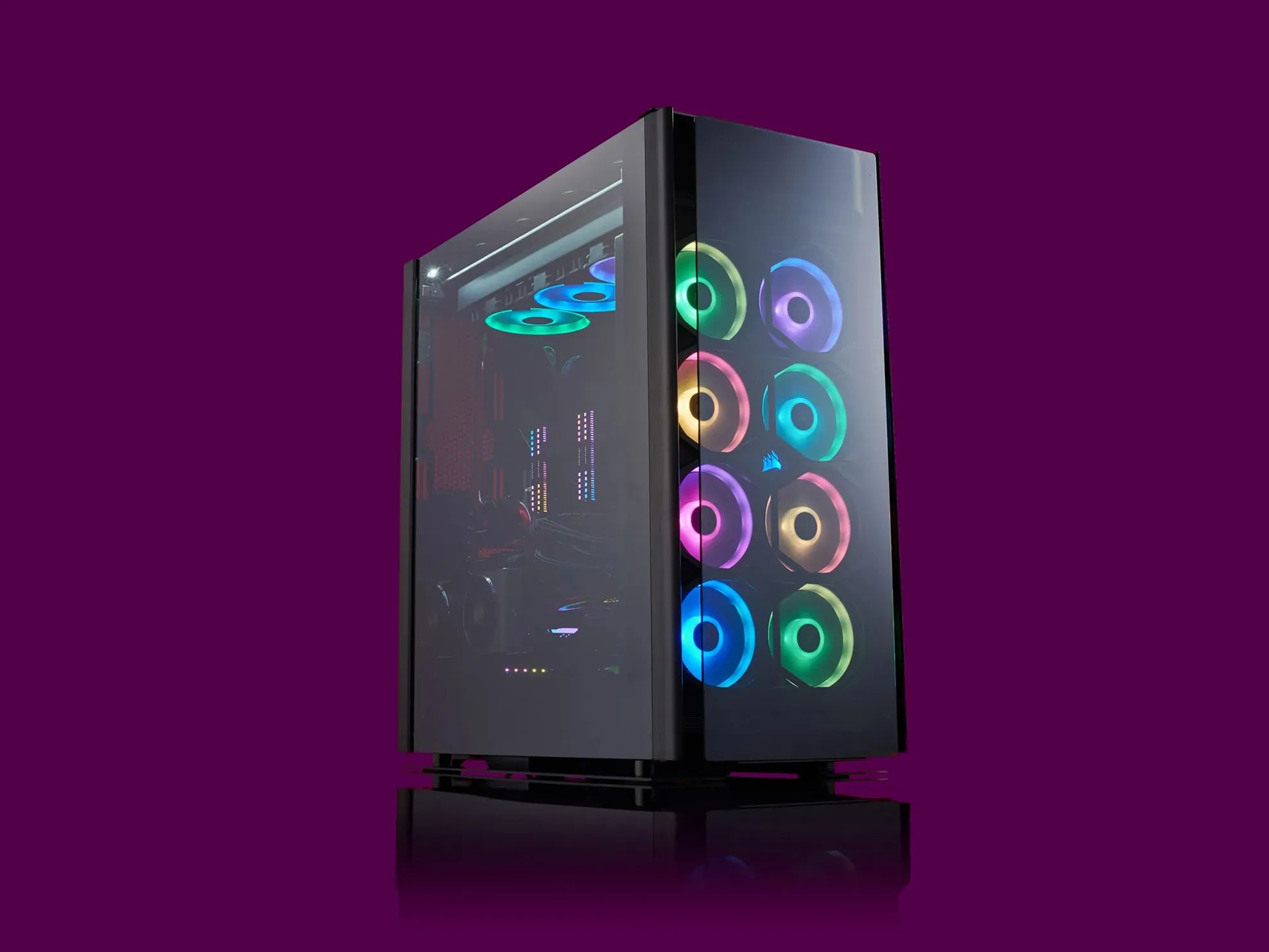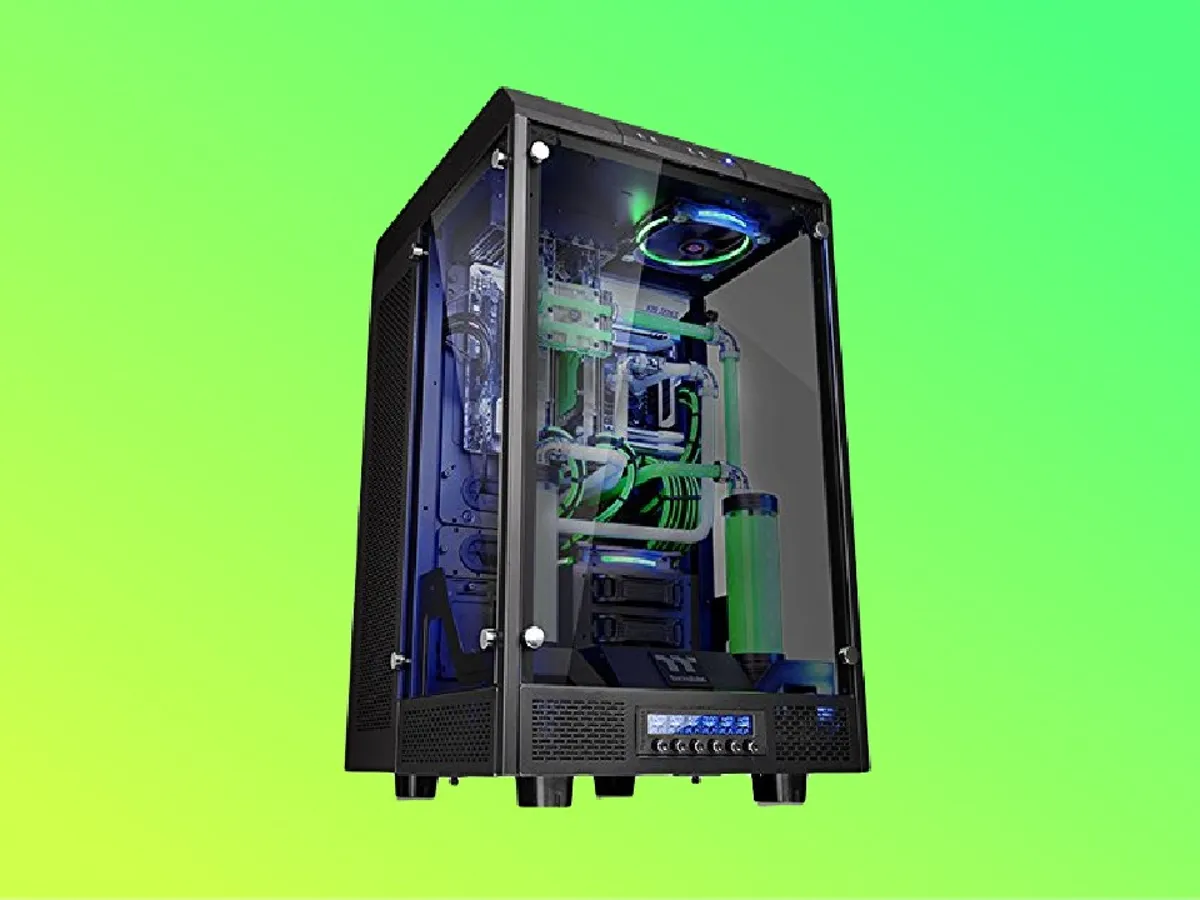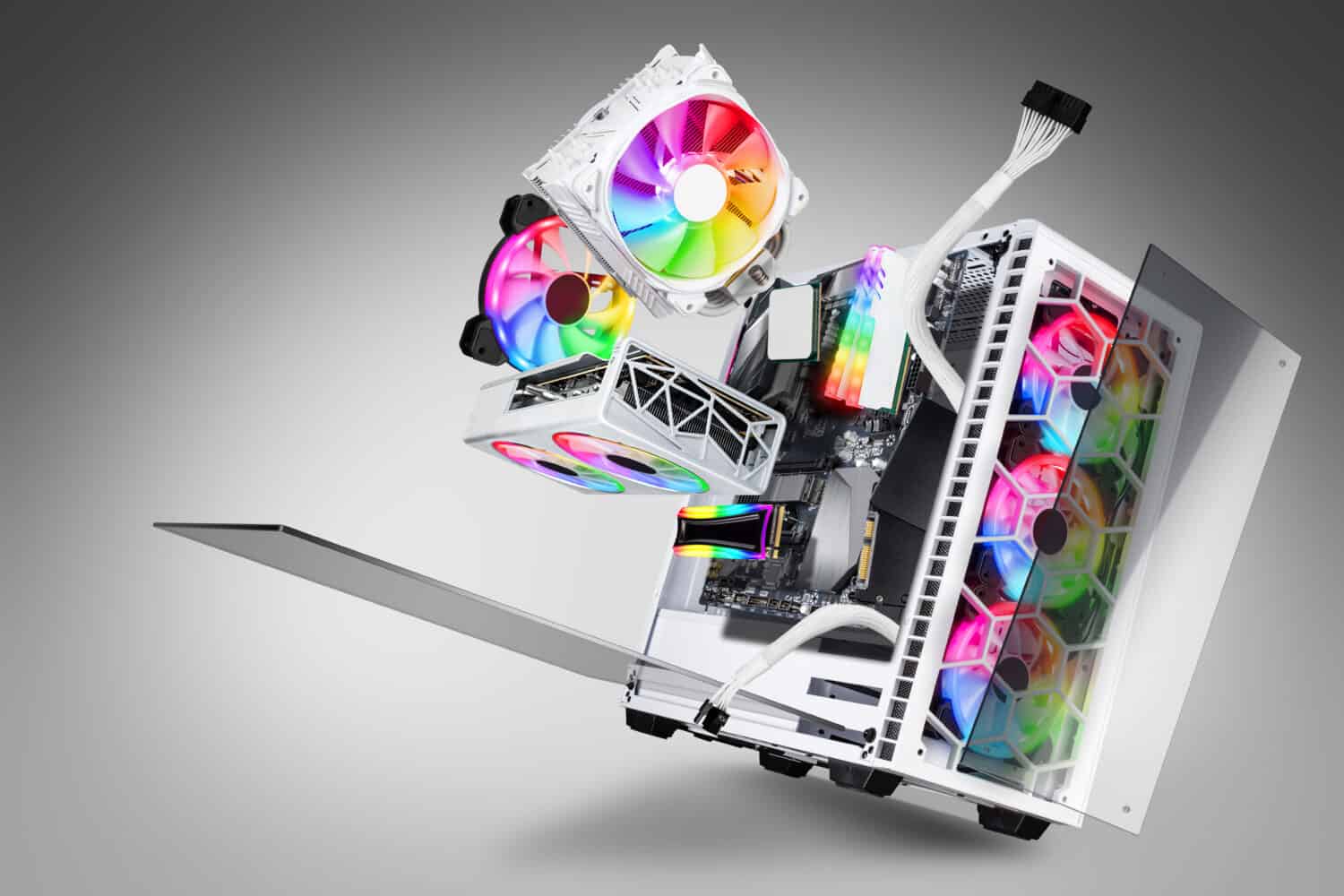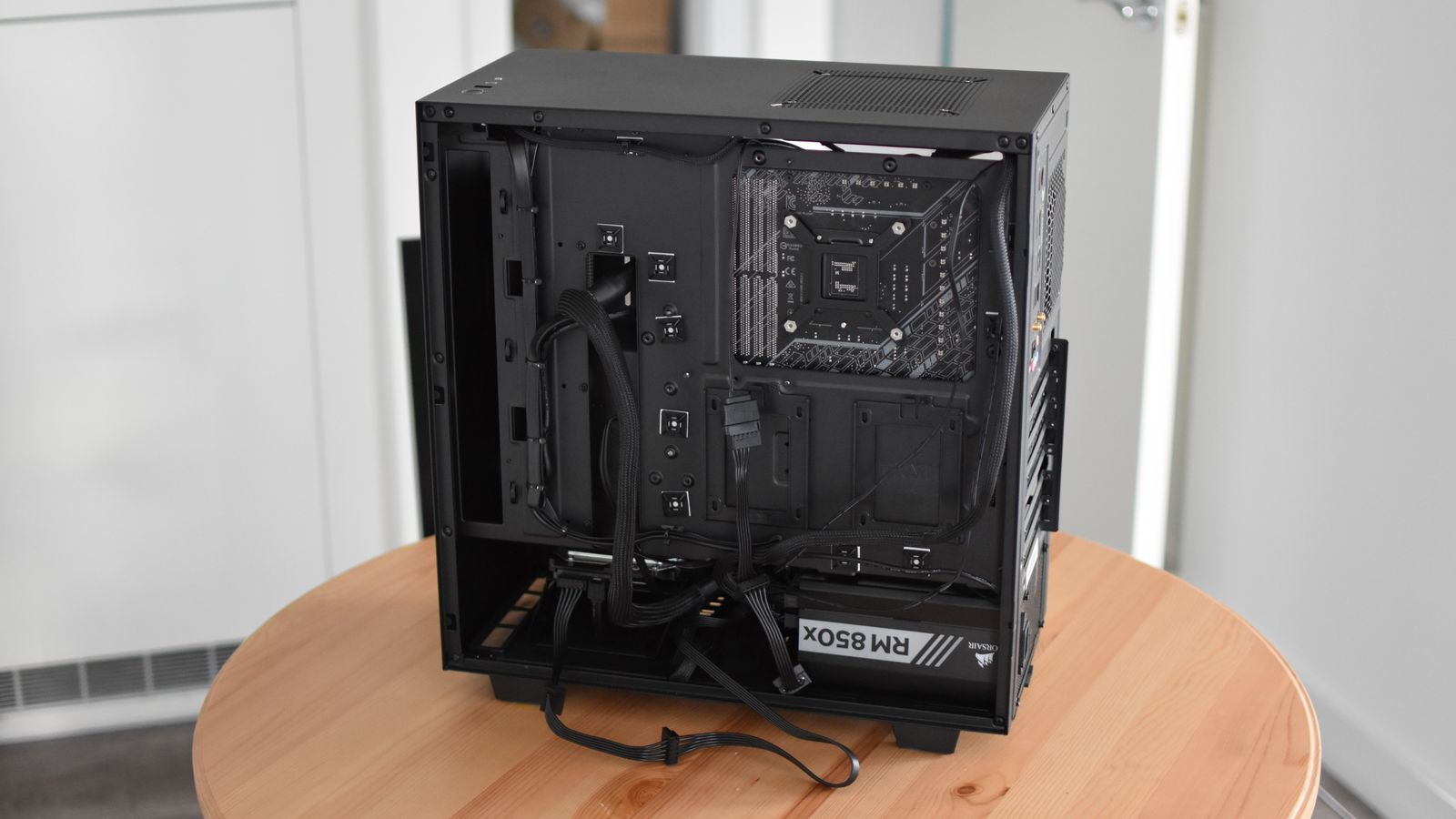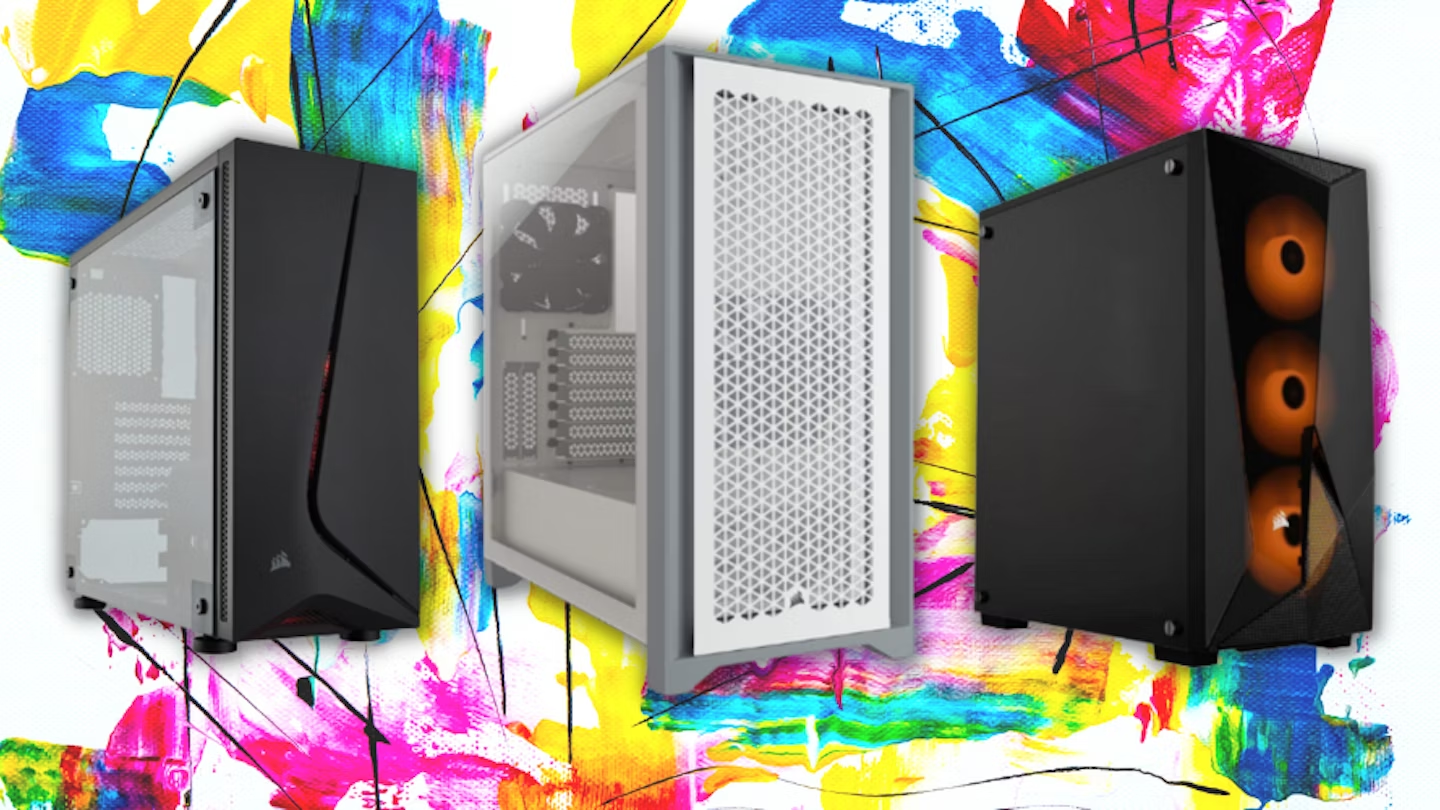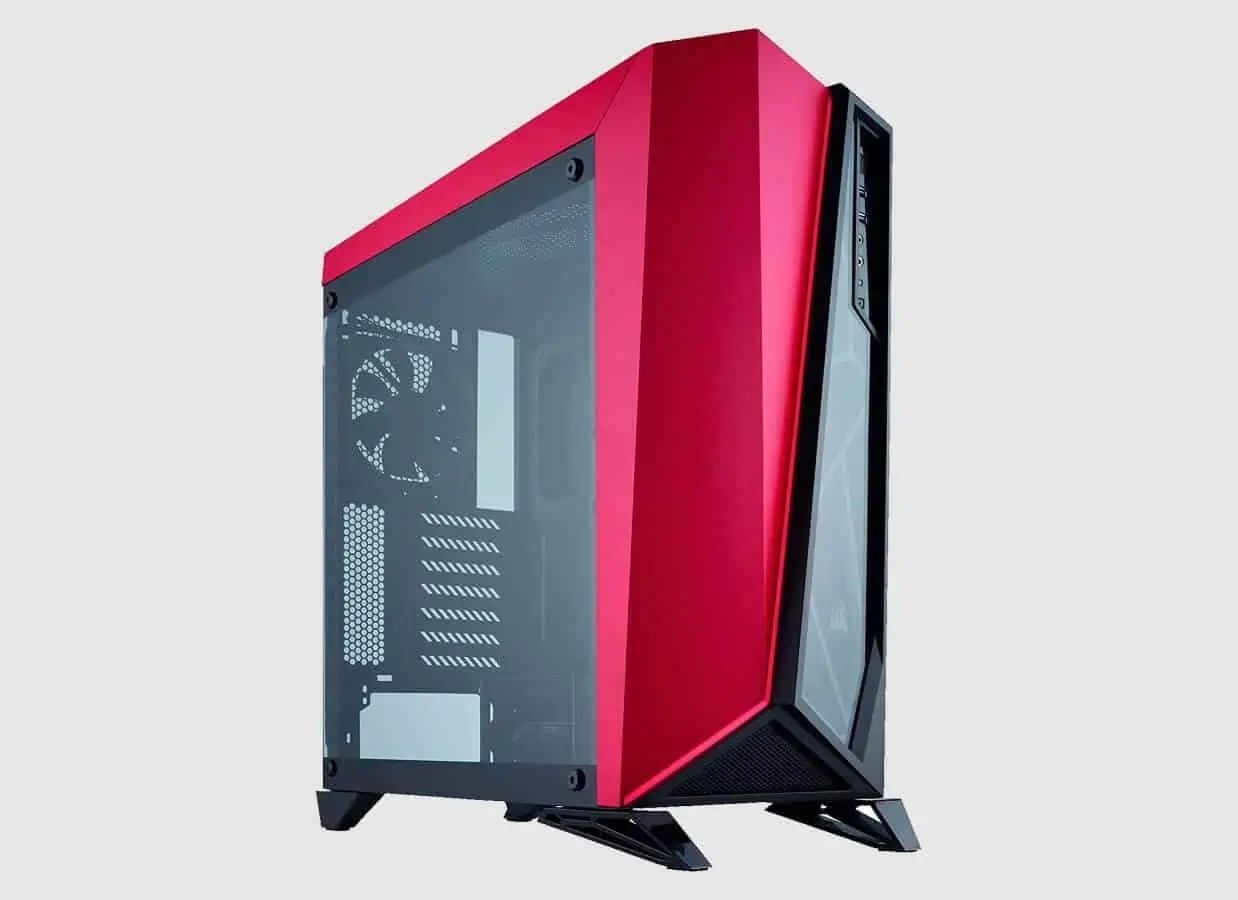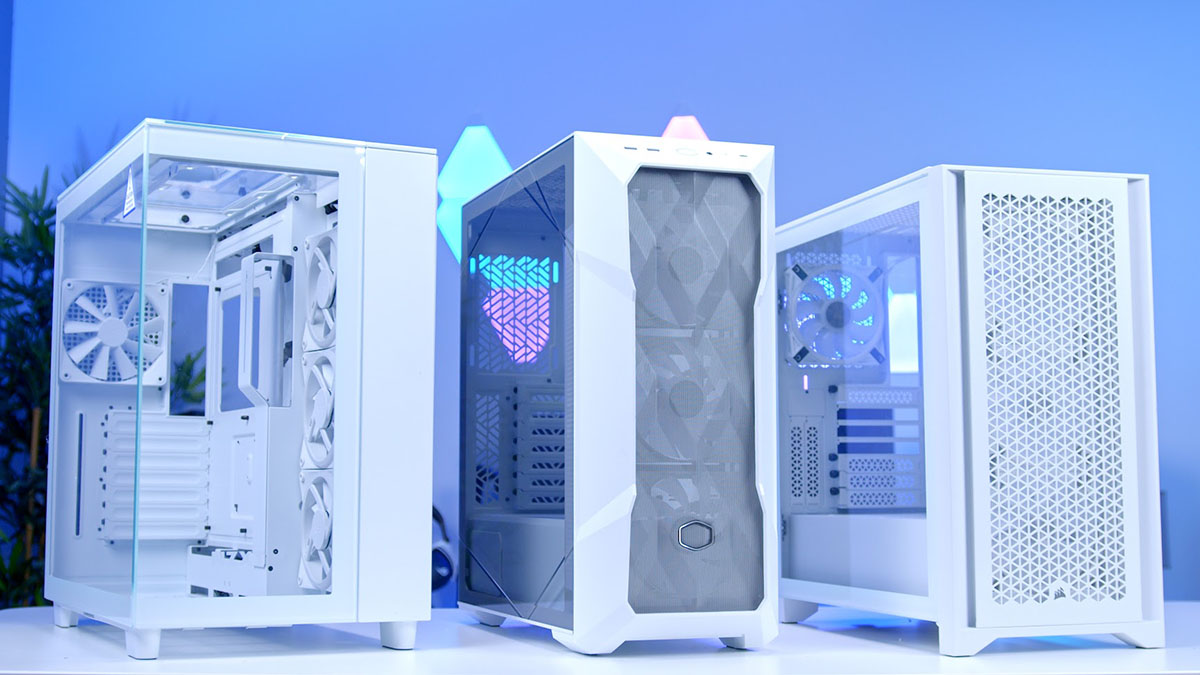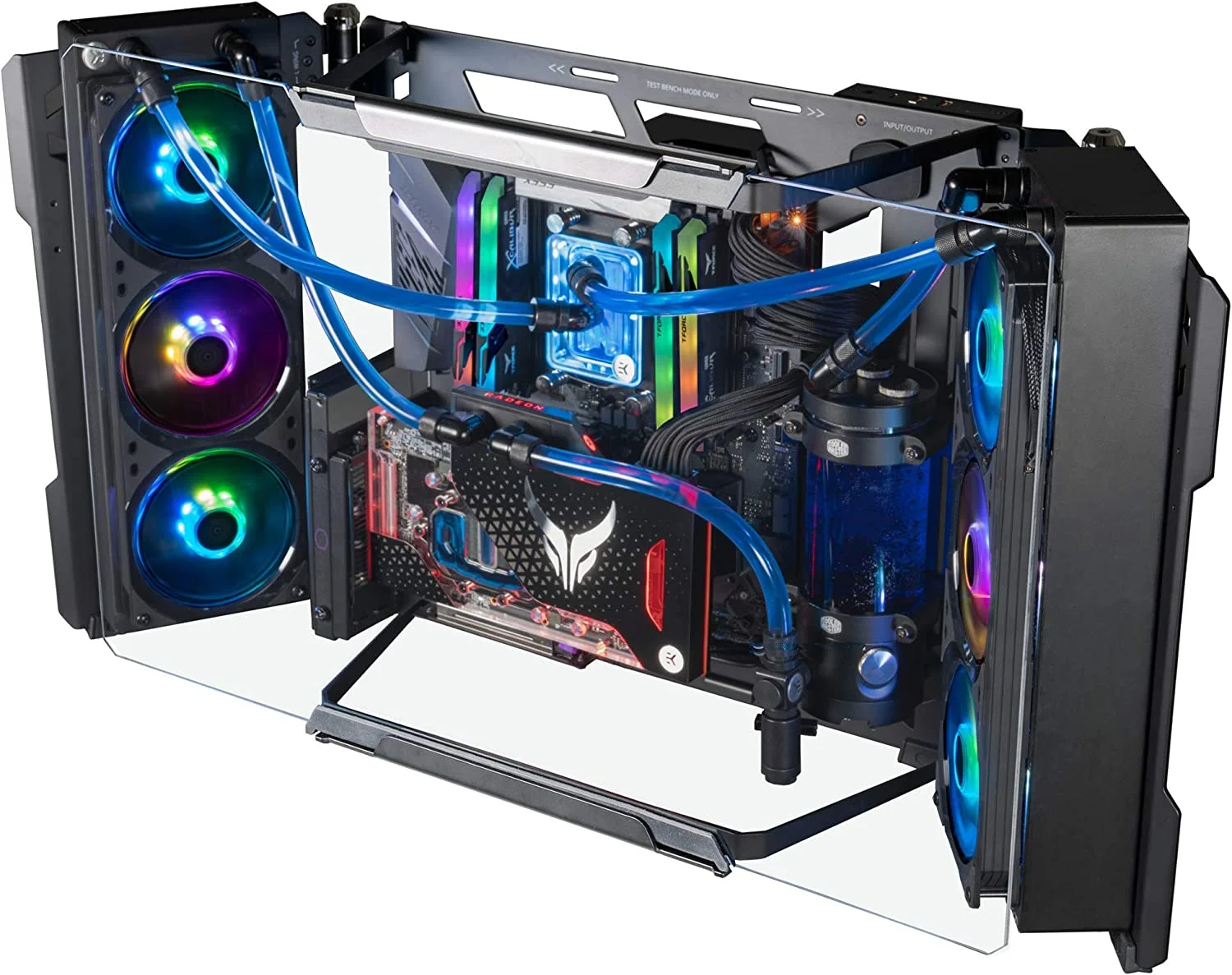Introduction
Have you ever noticed a small, blinking light on the front of your PC case and wondered what its purpose is? That little light can be a source of curiosity for many computer users, especially those who are not familiar with the inner workings of their machines. In this article, we will explore the function and significance of the flashing light on the front of your PC case.
Modern computers are equipped with various components and indicators that provide valuable information about the system’s status and activities. The flashing light, often located next to the power button, serves as a visual indicator of specific events happening inside your computer.
This flashing light can provide essential insights into critical activities, such as power status, hard drive activity, and network connectivity. By understanding the purpose of these different light signals, you can gain a better understanding of your computer’s performance and troubleshoot any potential issues.
So, let’s dive into the fascinating world of PC case lights and uncover the mysteries behind that small, blinking light on the front of your computer.
What is the flashing light on the front of my PC case?
The flashing light on the front of your PC case is an indicator that provides important information about the status and activities of your computer. It is designed to give you visual feedback on various events happening within your machine.
These lights serve as a communication tool between your computer’s hardware and you, the user. By understanding the meaning behind the different light signals, you can gain insights into the performance and functionality of your system.
Most commonly, there are three types of flashing lights that you may find on the front of your PC case:
- Power indicator light: This light indicates whether your computer is powered on or off. When the light is solid, it means your computer is successfully receiving power. If the light is blinking or not lit at all, it may indicate a power issue that needs to be addressed.
- Hard drive activity light: Also known as the HDD activity light, this indicator shows the read and write activities of your computer’s hard drive. When the light blinks or flickers, it means data is being accessed or written to the hard drive. This is particularly useful when transferring files or installing software, as it shows that your computer is actively working on a task.
- Network activity light: If your computer is connected to a network, such as through an Ethernet cable, you may notice a flashing light that indicates network activity. This light blinks when data is being transmitted or received over the network connection. It can be helpful to determine if your computer is actively communicating with other devices on the network.
Understanding the purpose of these flashing lights can be beneficial for troubleshooting or monitoring your computer’s performance. If you encounter any issues with power, hard drive access, or network connectivity, paying attention to these lights can give you valuable clues about the problem.
Now that we know what the flashing light on the front of your PC case represents, let’s explore each type in more detail and discuss how to troubleshoot any potential problems related to them.
Purpose of the flashing light
The flashing light on the front of your PC case serves a crucial purpose – to provide you with important information about the status and activities of your computer. These lights are designed to convey visual cues and indicators that can help you understand the functionality and performance of your system.
One of the primary purposes of these flashing lights is to provide feedback on the power status of your computer. The power indicator light, which is typically solid when your computer is powered on, blinks or may be completely off when there is a power issue. This can help you quickly identify if there are any electricity supply problems or issues with the power connection to the computer.
Another important purpose of the flashing light is to indicate the activity of your computer’s hard drive. The hard drive activity light, also known as the HDD activity light, blinks or flickers when data is being accessed or written to the hard drive. This can be especially useful when transferring large files, installing software, or running disk-intensive tasks. By observing the activity light, you can confirm that your computer is actively reading or writing data to the hard drive.
The flashing light on your PC case may also serve as an indicator of network activity. If your computer is connected to a network, you might notice a blinking light that signifies data transmission and communication. This can be particularly helpful in troubleshooting network connectivity issues or determining if your computer is successfully connected to other devices on the network.
Understanding the purpose of these flashing lights can empower you to monitor and troubleshoot your computer effectively. By paying attention to these indicators, you can quickly identify potential problems and take appropriate actions to resolve them. Whether it be power issues, hard drive activity, or network connectivity problems, these lights offer valuable insights into the performance and functionality of your computer.
Now that we have explored the purpose of the flashing lights on the front of your PC case, let’s delve deeper into the different types of flashing lights and their specific functions.
Different types of flashing lights
The flashing lights on the front of your PC case serve different functions, each representing a specific aspect of your computer’s operation. Understanding these different types of flashing lights can help you better interpret the status and activities of your system. Let’s take a closer look at each of these types:
- Power indicator light: This light indicates the power status of your computer. When the light is solid, it means your computer is receiving power and is turned on. If the light is blinking or not lit at all, it suggests a power issue. This could be due to a loose power connection, faulty power supply, or other related problems. If you encounter a blinking power indicator light, it is important to investigate and resolve the underlying power problem.
- Hard drive activity light: The hard drive activity light, often labeled as HDD activity, reveals the read and write activities of your computer’s hard drive. The light blinks or flickers when data is being accessed or written to the hard drive. For instance, when you copy or move files, install software, or perform disk-intensive tasks, the hard drive activity light will signify the ongoing operation. This light provides reassurance that your computer is actively working on the task at hand.
- Network activity light: If your computer is connected to a network, you may notice a flashing light that indicates network activity. This light blinks when data is being transmitted or received over the network connection. It can be especially useful for troubleshooting network issues or identifying whether your computer is communicating with other devices on the network. By observing the network activity light, you can quickly determine if there is active data transfer happening between your computer and the network.
By understanding the different types of flashing lights on your PC case, you can gain valuable insights into the various aspects of your computer’s functioning. These lights serve as indicators for power status, hard drive activity, and network connectivity, allowing you to monitor and troubleshoot your system effectively.
Now that we have explored the different types of flashing lights, let’s move on to troubleshooting the flashing light in case you encounter any issues.
Power indicator light
The power indicator light on the front of your PC case is a vital component that provides information about the power status of your computer. It serves as a visual indicator to let you know whether your computer is powered on or off. Understanding the status of your power indicator light can help you troubleshoot power-related problems and ensure the proper functioning of your system.
When your computer is powered on and receiving electricity, the power indicator light is typically solid, indicating that the system is up and running. This solid light is a reassuring sign that your computer is correctly connected to a power source and functioning properly.
However, when the power indicator light starts blinking or is not lit at all, it indicates a power issue that needs attention. Several factors can contribute to a blinking power indicator light, including unstable power supply, a loose power connection, or a faulty power supply unit (PSU).
If you encounter a blinking power indicator light, here are a few steps you can take to troubleshoot the issue:
- Check the power connection: Ensure that the power cable is securely connected to both the computer and the power outlet. A loose connection can disrupt the flow of power, causing the light to blink. It’s also a good idea to try using a different power outlet to rule out any issues with the current outlet.
- Inspect the power supply unit (PSU): The power supply unit is responsible for delivering power to your computer. If the power indicator light continues to blink, it may indicate a faulty PSU. In this case, it’s recommended to seek professional help or replace the power supply unit with a new one.
- Check for power fluctuations: Fluctuations in the power supply can cause the power indicator light to blink. Investing in a surge protector or an uninterruptible power supply (UPS) can help protect your computer from voltage spikes and ensure a stable power supply.
By following these troubleshooting steps, you can identify and resolve power-related issues that might be causing the blinking power indicator light on your PC case.
Remember, the power indicator light is a crucial component for the overall functionality of your computer. By actively monitoring the status of this light and taking appropriate action when necessary, you can maintain a stable and reliable power supply for your system.
Now that you have a better understanding of the power indicator light, let’s move on to exploring the next flashing light – the hard drive activity light.
Hard drive activity light
The hard drive activity light, also known as the HDD activity light, is a crucial component on the front of your PC case that provides information about the data access and write activities of your computer’s hard drive. This flashing light serves as a visual indicator to let you know when data is being accessed or written to the hard drive.
When you perform tasks such as transferring files, installing software, or running disk-intensive operations, the hard drive activity light will start blinking or flickering. This indicates that your computer is actively reading or writing data from or to the hard drive. The intensity and frequency of the blinking light can vary depending on the level of hard drive activity.
The hard drive activity light serves multiple purposes and can provide several benefits:
- Confirmation of disk activity: The hard drive activity light reassures you that your computer is working on the task at hand. It gives you visual feedback that data is being accessed or transferred, which can be particularly useful when carrying out large file transfers or intensive disk operations.
- Indication of system responsiveness: When your computer is performing demanding tasks, the hard drive activity light can help you gauge its responsiveness. If the light is constantly glowing or blinking rapidly for an extended period, it can indicate that the system is under heavy load and may be slower in responding to your commands.
- Identification of software or hardware issues: If you notice that the hard drive activity light is constantly blinking or flickering, even when you are not performing any significant tasks, it may indicate a software or hardware issue. This persistent activity could be a sign of background processes or malfunctioning hardware components that require further investigation.
While the hard drive activity light is a useful indicator, it is important to remember that it does not provide detailed information about the specific tasks or processes taking place on your computer. It merely informs you that the hard drive is actively being accessed or written to. For more detailed insights into system activities, you can rely on performance monitoring tools and task managers provided by your operating system.
By paying attention to the hard drive activity light, you can have a better understanding of the data access and write activities taking place on your computer. This awareness can help you identify any potential performance issues, troubleshoot hardware or software problems, and ensure the smooth and efficient operation of your system.
Now that we have explored the purpose and benefits of the hard drive activity light, let’s move on to the next flashing light – the network activity light.
Network activity light
The network activity light is a handy component on the front of your PC case that provides information about the network connectivity and data transfer activities of your computer. This flashing light serves as a visual indicator to let you know when data is being transmitted or received over the network connection.
If your computer is connected to a network, such as through an Ethernet cable, you may notice the network activity light blinking or flickering. This indicates that your computer is actively exchanging data with other devices on the network. The intensity and frequency of the blinking light can vary depending on the amount of data being transmitted or received.
The network activity light has a few key purposes and benefits:
- Verification of network connectivity: The network activity light serves as a quick and visual way to confirm that your computer is successfully connected to the network. When the light is blinking, it indicates that your computer is actively communicating with other devices, ensuring that network connectivity is established.
- Identification of data transfer: By observing the network activity light, you can determine if data is being transmitted or received over the network connection. This can be helpful when you are transferring large files, streaming media, or engaging in online gaming, as the blinking light confirms that the data is being exchanged between your computer and the network.
- Indication of network activity: The network activity light provides valuable insights into the overall network activity. If the light is constantly blinking or flickering, it suggests that there is significant data traffic on the network. This can be particularly useful for network administrators, as they can monitor and assess network congestion or abnormal network behavior.
While the network activity light indicates network connectivity and data transfer, it does not provide detailed information about the specific data being transmitted or received. For more in-depth analysis of network traffic and monitoring, dedicated network monitoring tools and software can be used.
By paying attention to the network activity light, you can quickly verify network connectivity, confirm data transfer, and monitor overall network activity. This awareness allows you to troubleshoot network issues, identify potential bottlenecks, and ensure smooth and uninterrupted network communication.
Now that we have explored the purpose and benefits of the network activity light, let’s move on to the next section, where we will discuss troubleshooting tips for the flashing lights on the front of your PC case.
Troubleshooting the flashing light
If you encounter any issues with the flashing lights on the front of your PC case, there are some troubleshooting steps you can take to identify and resolve the problem. Here are some common troubleshooting tips:
- Check the physical connection: Ensure that all cables and connections related to the flashing lights are secure and properly connected. Loose connections can result in intermittent blinking or no light at all. Take a moment to inspect the cables and make sure they are firmly plugged in.
- Restart your computer: Sometimes, a simple restart can fix minor issues. Restart your computer and see if the flashing light returns to normal. This can help resolve temporary glitches or software-related conflicts that may be causing the problem.
- Update device drivers: Outdated or incompatible device drivers can sometimes cause issues with the flashing lights. Ensure that you have the latest drivers installed for your hardware components. You can visit the manufacturer’s website or use driver update software to easily update your device drivers.
- Confirm power supply: If you are experiencing problems with the power indicator light, check the power supply. Make sure that the power cable is securely connected to both the computer and the power outlet. If necessary, try using a different power cable or power outlet to rule out any power-related problems.
- Monitor system performance: If you notice unusual or persistent blinking of the flashing lights, it may be indicative of performance issues. Use task managers or system monitoring software to check for high CPU or memory usage, as well as excessive network activity. This can help identify any resource-intensive processes or software that may be causing the abnormal light behavior.
- Consult manufacturer or seek professional help: If you have tried the troubleshooting steps above and the issue persists, it is recommended to consult the manufacturer’s support documentation or contact their customer support for further assistance. Alternatively, you can seek professional help from a computer technician who can diagnose and resolve the issue.
Remember, troubleshooting the flashing lights on your PC case requires patience and a systematic approach. By following these troubleshooting tips, you can identify and address common issues related to power, connectivity, device drivers, and overall system performance.
If all else fails, it is always best to seek professional help to ensure a proper resolution and prevent further damage to your computer system.
Now that we have covered troubleshooting tips for the flashing lights, let’s summarize the key points we discussed throughout this article.
Conclusion
The flashing lights on the front of your PC case serve as important indicators, providing valuable information about the status and activities of your computer. Understanding the purpose and meaning behind these lights can empower you to monitor your system effectively and troubleshoot any potential issues.
We explored three main types of flashing lights that you may encounter on your PC case:
- The power indicator light indicates the power status of your computer and can help identify power-related problems.
- The hard drive activity light signifies data access and write activities on your computer’s hard drive, providing reassurance that tasks are being performed.
- The network activity light displays network connectivity and data transfer, allowing you to monitor network communication.
Knowing how to troubleshoot issues related to these lights can help in resolving common problems. By checking physical connections, restarting your computer, updating device drivers, and monitoring system performance, you can address many issues that may arise.
If you encounter persistent problems or feel unsure about troubleshooting steps, it is recommended to consult the manufacturer’s support documentation or seek professional help.
Overall, the flashing lights on the front of your PC case are essential for understanding and monitoring the functions of your computer. By paying attention to these lights and taking appropriate actions when necessary, you can ensure the smooth operation of your system and have a better understanding of its performance and connectivity.
Now, armed with this knowledge, you can confidently interpret the flashing lights on your PC case and navigate any issues that may arise in your computer’s journey.







